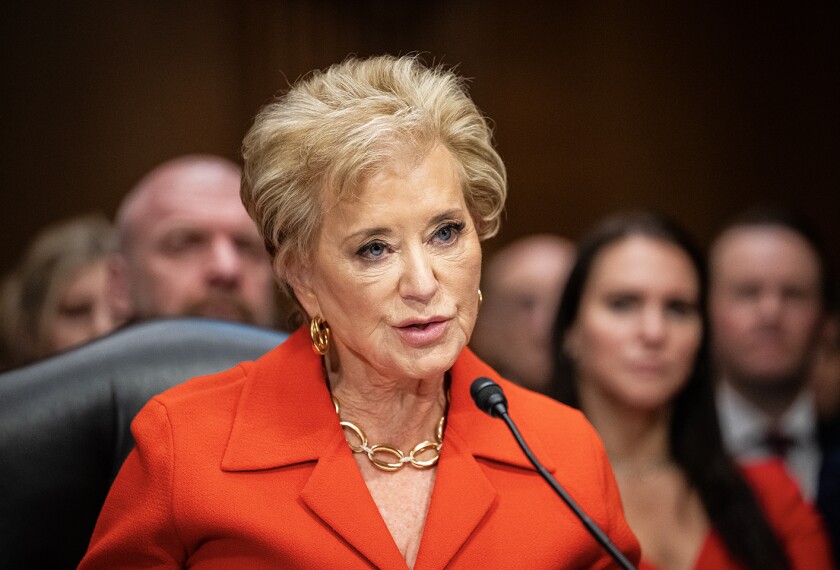Secretary of Education Rod Paige, speaking last week at a conference on high schools at which several new federal initiatives were unveiled, said that while some schools are “amazing success stories,” far too many fall short, especially for minority and disadvantaged students.
“Put bluntly, our high schools are not serving our kids well,” the secretary told about 700 participants here Oct. 8 at the high school leadership “summit” hosted by the Department of Education. “Our high schools need much more than just tinkering around the edges. We need overall reform.”
Mr. Paige said the department was creating a leadership initiative for high schools called “Preparing America’s Future.” It will seek to bring together a broad group of stakeholders—including parents, teachers, principals, policymakers, elected leaders, foundations, and business leaders—to build “the next generation of high schools.”
Mr. Paige said last week’s one-day gathering would soon be followed up with a series of regional conferences across the country on improving high schools.
In a press briefing the same day, Susan Sclafani, the department’s acting assistant secretary for vocational and technical education, said that through the new initiative, the agency also aims to provide technical assistance.
“We’re ... looking at creating a corps of technical advisers on high school reform, who will be available to states and school districts as they’re trying to develop their reform plans,” she said.
Web Resources
In addition, Secretary Paige announced 22 grants, totaling $11 million, for “promising activities” in grades 6-12 to increase the number of students from low-income families who enroll and succeed in advanced courses.
He also announced $2.4 million in grants to expand the State Scholars Initiative, a business-led effort to increase the percentage of students completing a defined set of rigorous courses so they are better prepared for success in postsecondary education. Six states received such funding last year, and this year six more—Connecticut, Kentucky, Mississippi, New Jersey, New Mexico, and Washington state—were selected to receive up to $300,000 each over the next two years.
The federal government has set up a few new places on the World Wide Web to dispense information related to helping young people with their career and educational options. Earlier this month, the Education Department unveiled a Web tool—www.studentaid.ed.gov—to help parents and students through the college-application and financial-aid process. Another new section on the agency’s Web site features information from the high school summit, as well as programs and legislation affecting high school. That address is www.ed.go v/about/offices/list/ovae/pi/hsinit/index.html.
Also speaking at the conference, Secretary of Labor Elaine L. Chao announced the Career Voyages Web site, at www.careervoyages.gov, a collaboration between the Education and Labor departments. She said it can help parents and young people learn about high-growth industries and occupations, and the skills needed to gain access to those opportunities. The information is also aimed at those changing careers, she said.
“It’s kind of like a lifelong-learning tool that everyone can use to help bridge the gap between their education, their skills, and also opportunities in the workforce,” Secretary Chao said.
The conference last week featured a range of panelists, from principals and state education chiefs to researchers and students. In one session, four high school seniors shared their insights.
Kelvin Alejo, a student at Banana Kelly High School in New York City, said he was pleased to attend the small school, with some 230 students, where teachers and students develop personal relationships. The teachers there, he said, push him much more academically than in the middle school he used to attend.
“We know the teachers on a first-name basis,” he said. “It’s not a school anymore, it’s a family.” He added: “Teachers are always on your back. ... They just motivate you.”
Lindsay Ullman, a senior at Corning-Painted Post West High School in Painted Post, N.Y, said: “The more the teacher expects, the more students will rise to those expectations.”




